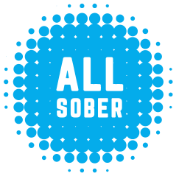
If you want to advance or switch careers, 2022 is a great time to finally make your move. Right now the job market favors workers. Companies have more job openings than they can fill, which means employees have additional opportunities to land the job they really want. But before you jump into the job market, create a career success plan to help ensure you are well prepared.
Blanca De La Rosa, author of “A Holistic Approach To Your Career,” provides tips and best practices that are useful for anyone applying to their first job, those who are looking for a new job, or those who have been out of the job market for an extended amount of time and are trying to reenter the workplace. She recommends a three-part process. First, assess your current skill set. Then, understand your ideal career. Finally, create a learning plan that will bridge the gap between where you are today and where you’d like to be in the future.
Identify Your Current Professional Skill Level
De La Rosa suggests doing a self-assessment to understand your strengths, weaknesses, opportunities and career threats. This is also known as a SWOT analysis. This method will help you uncover where you shine and highlight areas for improvement.
 Strengths: These are the personal characteristics that give you a competitive advantage. If you are unsure of your strengths, consider what others, such as friends, colleagues or managers say you excel at.
Strengths: These are the personal characteristics that give you a competitive advantage. If you are unsure of your strengths, consider what others, such as friends, colleagues or managers say you excel at.
Weaknesses: Understand what areas of your professional life need improvement. Are you lacking any skills or education that are required for the job you want?
Opportunities: These are factors that you can use to your advantage in the job market. This might be a combination of factors, such as your personal strengths and current market demand. For example, is someone in your workplace getting ready to retire? Do you have a resume polished and ready to apply for that job?
Threats: These are typically out of your control, and include factors like the number of job openings, the local economy in your area, or technology advancements that have reduced the number of positions in industries like manufacturing. The most important tip here is to understand the threats so can you either avoid them or take measures to counteract them.
Develop a Learning Plan
Once you’ve completed a self-assessment, use that information to create a learning plan. This is a road map to help you navigate your career journey. Start with your current goals, be mindful of areas where you need improvement, then take the following steps.
What do you want to accomplish? Create a specific career goal. Do you want a new job in the same field? Do you want a specific promotion? Do you want to change careers?
List your current skills gaps. Understand what additional training or credentials you will need to advance in your desired career. If you are not sure, look at job listings for your desired job. What skills do they ask for? What education is required?
Research educational opportunities. Understand the level of training or education that is required to bridge the gap. Do you need to attend a four-year college, or will a professional certification course be enough? Look at all the options available. They range from online professional development courses or virtual certificate training (especially prevalent in IT fields) to traditional universities or technical training schools.
Are you eligible for financial aid? Even if you are a nontraditional student, there are many forms of grants, scholarships or loans available for students of all kinds.
Create a timeline. After you decide what your need to do, create deadlines to maintain momentum.
How To Prepare a Resume
 Everyone needs a resume, regardless of where they are in their career. New graduates need to prepare a resume for their first job, and those already in the workforce need a resume to advance to a new position or change companies. Even if you already have a resume, evaluate it to understand if it best serves your current needs. Every resume should have basic information and be personalized to the job you are applying for.
Everyone needs a resume, regardless of where they are in their career. New graduates need to prepare a resume for their first job, and those already in the workforce need a resume to advance to a new position or change companies. Even if you already have a resume, evaluate it to understand if it best serves your current needs. Every resume should have basic information and be personalized to the job you are applying for.
Include contact information. List your phone number and email address so hiring managers can easily contact you for an interview.
Focus on achievements versus tasks. Instead of listing everything you do (or have done) at your job, list the benefits. For example, instead of saying “make sales calls” or “answer customer service calls,” detail what value you’ve added. Explain how much in sales you’ve generated or the percentage of times you are able to resolve customer complaints.
Highlight your unique skills. These might be job-specific like technical skills or certificates, or they can include skills that you’ve picked up outside of work. For example, do you speak multiple languages? List those skills on your resume.
Choose a resume style. There are three main types of resumes. Chronological resumes list all your jobs in order of most recent to oldest and are best for those with no gaps in work history. The skills-based resume lists your qualifications. These are better for those changing careers or those who have gaps in employment history. The third is a combination of the two styles and is best suited to those who are advanced in their field.
Always proofread. Even the most detail-oriented person can miss a typo. Proofread your resume several times and use a spell-check tool.
Follow these guidelines for a competitive edge, and then navigate the job market with confidence.
More Relaunch
I'm in Recovery and Ready To Work. What Do I Need To Know?
A job can bring serious benefits to your recovery, even beyond the financial ones. But it can also test you. If you understand a few things going in — or going back — you'll be golden.
Subs & Drugs & Rock & Roll, Part 3: 'I'm a Loser (And I'm Not What I Appear To Be)'
Don Fertman reaches bottom as the jelly donut hits the wall. The latest installment of the longtime Subway exec's memoir.
Subs & Drugs & Rock & Roll, Part 2: A Day in the Life
Don Fertman woke up one morning 40 years ago and poured himself a drink, as usual. But the future Subway exec didn't know this day would be far from ordinary.
Subs & Drugs & Rock & Roll, Part 1: With a Little Help From My Friends
Don Fertman, longtime Subway exec, writes about a pivotal moment in his 40 years of sobriety: what happened after he went public about his recovery on "Undercover Boss."
Here's How To Make the Office Holiday Party Recovery-Friendly
Four ways to make your holiday party more inviting to employees who are in recovery, according to the Society for Human Resource Management.
How Can I Be a Sober Ally in the Workplace?
You're not in addiction recovery, but you want to show up for people who are. Great! Here's what that looks like at the office.
Is Alcohol Big in Your Work Culture? Here's How To Sidestep — Or Talk About It
The "Mad Men" era may be over, but some workplaces can still be particularly challenging in recovery. Some pointers on putting your sobriety first.
Your Guide To Hanging Out and Making Friends in College — Sober
Doing college sans drugs and alcohol doesn't have to be a struggle. Some tips on making bonds that'll last and having a blast.











